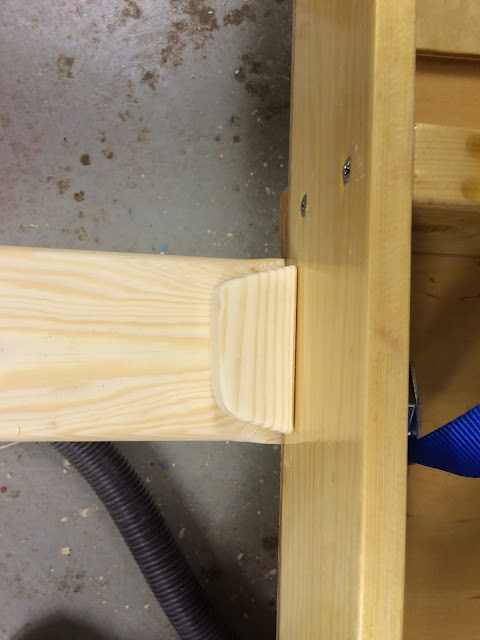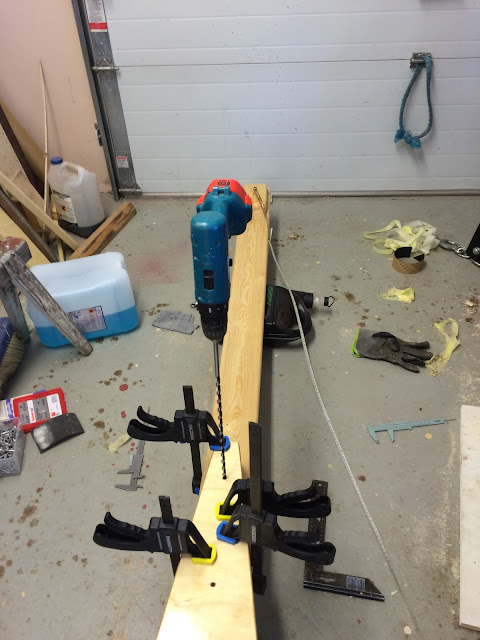For the rear runners I'm thinking there are basically two ways to go. One is to follow Bernd Stymers design explained in the building instructions of the Isabellakiss 2012. Or to build as pictures of earlier Isabella iceboats shown on the internet have.
Animations below showing old design of chocks and runners versus new design of chocks and runners.(Animations are cutouts from the building instructions).

Pros and cons of the alternatives.
Alternative one, according to building instruction in Isabellakiss 2012:
+ I like the new design as it seems smart!
+ No need to weld anything.
+ The fact that the runners would be made of L profile bar would remove the need for building stiffeners to runners and at the same time provide full height of the blade. As stiffeners usually tent make the runners thicker and thus making it harder for the runner to cut true snow on the ice witch slows the boat down.
- Manufacturing of some of the parts for chocks would need to be outsourced.
- Dimensional drawings for the manufactured parts would need to be made as the building instructions have little detail when it comes to dimensions.
- Weight is a concern even if I'm not sure the design is actually heavier than the alternative.
- There seems to be no experience of the new design shared on the iceboat forums.
- I have been to scrap yards twice now to find some material for the chocks and runners but without success. If I buy the material needed from a hard ware store I have to buy big quantities so I should build several boats at once.
Alternative two. "Old" design runners and chocks.
+ I built an ice boat ~15 years ago were similar chock and runners were used. With the experience from that boat I believe I should be able to build functioning chocks and runners. At least for the rear runners. (I had some problems on the front runner chock on the earlier boat and it was reinforced and modified at least twice before it worked properly).
+ The chocks and runners can be built out of material one is able to get hold of.
- Result becomes more uncertain as one improvises based on what material one is able to find.
Below some pictures of the first ice boat I built.
The two pictures below are taken before the first time the boat was ever sailed. The first version of runners and chocks can be seen. At this point the runners where sharpened over the whole length and did not have any radius. Runners where sharpened in 90 degrees angle. There are no stiffeners installed on runners yet!
Ready for first shake down test! Witch resulted in a broken support mast :)
This is what the boat looked like before it was sold. Rear chocks were not modified but runners have gotten stiffeners. Front runner chock has been modified. The runners where only sharp and straight on a 10 cm long area below the bolt rest of the runner was made round and with a radius. Also the sail hauling system was completely rebuilt compared to first version.
























































